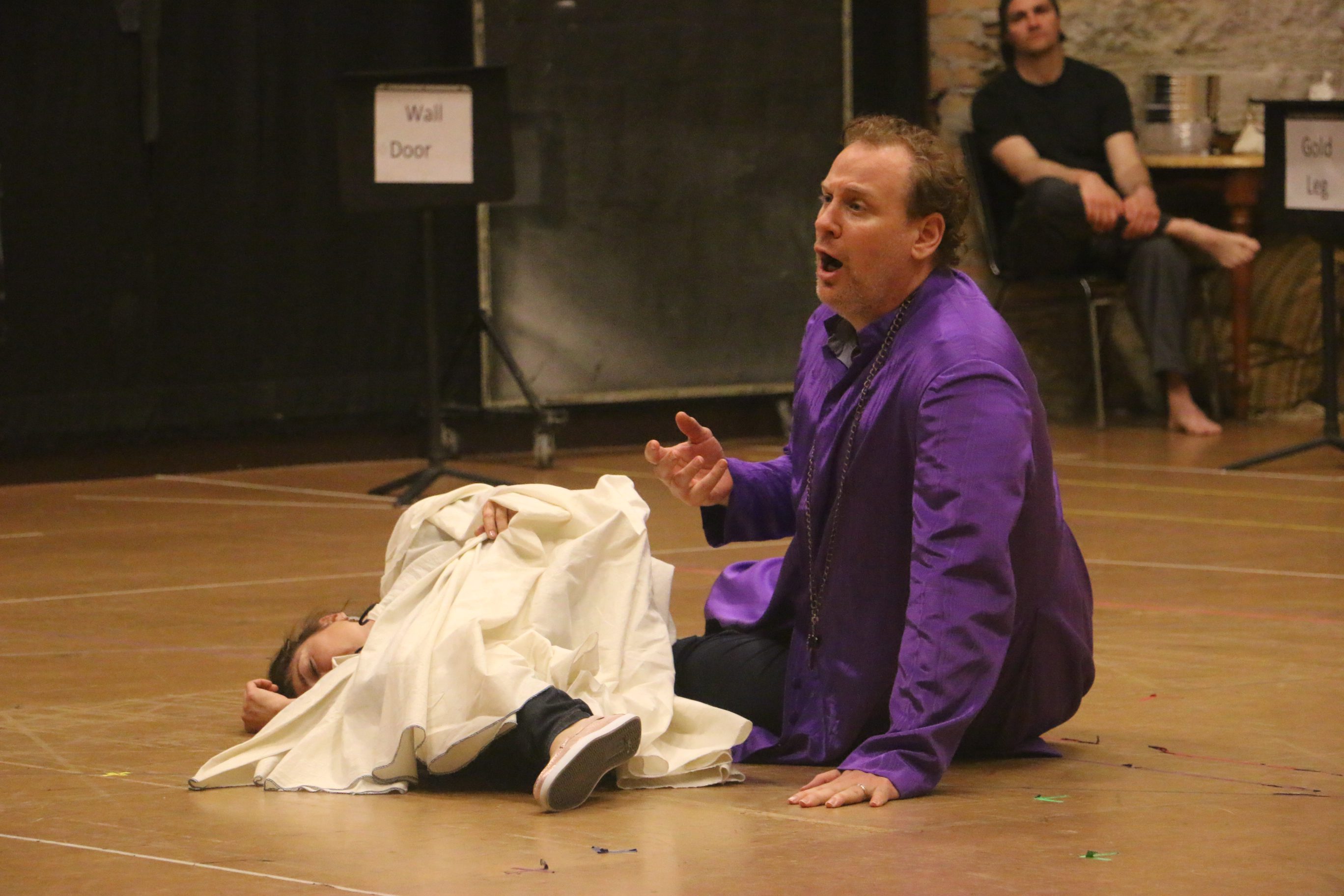
A full day of opera singing is no easy feat for two precious vocal cords, so in the thick of intense back-to-back staging rehearsals that can last up to seven weeks, we singers do what’s called “marking.”
Marking saves your cords from potential vocal trauma during the staging process, so that your voice is ready to go when you need to be at your best. A full vocal performance isn’t necessary for those early rehearsals, because you’re focusing on the staging, blocking, and relationships with the other characters.
So, how do you mark and what are some techniques you can use? There are tons out there and these are mine!
Takin’ It Smart
Don’t think of marking as takin’ it easy—it’s the smart thing to do. It’s preserving your voice while keeping the full weight of the drama and intention of your performance intact. The only thing that’s altered is the volume of your sound.
It’s like football practice without the pads, meaning you don’t hit other players full-force with your physical body, but you still practice the outline of a play. It’s less hardcore but you’re still going through the motions and you need to be in the right place at the right time. You’re not taxing your body or risking injury.
Your marking technique should be something easy you can do day in and day out, so do what feels best in your voice while keeping the music in time and the drama in line.
I like to keep my marking forward and bright. I do this to remind myself to actually sing in that same place because there’s a small chance that if you mark incorrectly, you’ll sing incorrectly. We don’t want to sabotage our technique. So when I mark, I actually sound like a tenor with no support or a pop singer.
Another important thing I do when I mark is use vibrato on every note—something I do with my regular singing. I’m not sacrificing the core values of my technique, just altering the sound a bit.
When it comes to your support when marking, you use less: less sound means less support. Thinking numbers here, I’d say support goes from 100% to around 15% – 30% when marking. So, without your full support, you may run out of breath sooner and feel the need to breathe in the middle of a word, which normally would be a major opera no-no. However, when marking it’s okay because you’re simulating a performance, not actually performing.
The Stages of Marking
Depending on how much of your voice you are saving, you can vary the level of how much you mark. I created this basic stage-level chart of marking for myself. By no means is it official or anything, it’s just a way for me to explain the different levels.
- Stage 1 – Singing everything full out with high notes light and easy/in falsetto
- Stage 2 – Same as Stage 1, except high notes are down the octave
- Stage 3 – Marking everything in pitch, going into falsetto for high notes
- Stage 4 – Marking everything in an easy octave range (dropping all of the high-ish notes and sometimes marking the lowest notes up the octave)
- Stage 5 – Rhythms and words spoken with no specific pitches
Regardless of what stage of marking you’re using, it’s always with intention and in tempo.
Now let’s talk about how much sound you should make. You still need to be heard by others in the rehearsal, but this means you only have to mark loudly enough for the conductor to hear you, and for either stage managers or fellow singers to take a cue off of you. When this happens, I like to point my head in the direction of them so it’s obvious. Find the right amount of projection and support (without taxing yourself) so that those crucial people can hear you at those pertinent times.

This reminds me of yet another reason why I keep my marking forward and bright: it’s easier to hear me when I have that “point” to my sound, plus it’s a less vocally taxing sound for me to create than a dark one.
The biggest mistake you can do when you mark is sing out the high notes and mark everything else. The whole point is that you’re saving your voice and high notes are the most taxing. Over time, it will falsely prepare you for your high notes and potentially disrupt your actual singing technique.
When to Mark
The biggest thing us singers have to tell ourselves is that it’s okay to mark. We want to get out there, put our entire beings into rehearsal, and we get carried away with our passion and love for the show and singing that we forget to save our voices. It’s hard but so important.
The times when you should always mark are when you’re sick, experiencing vocal fatigue, or when you’ve got your rehearsal game plan all mapped out. Your game plan is crucial, so I highly encourage you to do this.
And When NOT to Mark:
1. Sing the very first day of rehearsal, the sitzprobe (first run-through with orchestra), all rehearsals with orchestra, and most importantly the final dress rehearsal
2. Sing full out when you know the general director or casting director is in the hall
3. I like to sing out a few times when I first hit the stage to get an acoustical lay of the land by singing out a few high notes
Park and Mark
Staging rehearsals are the time for you to put your voice aside and bring out your inner Daniel Day-Lewis or Meryl Streep. Really go for the character in those rehearsals and when the time comes, find that balance between acting and singing. I know it can be hard but by going to both extremes at different times, you’re able to explore your limits and meet your balanced singer-actor-self in the middle.
What do you think? Did you find this article interesting, entertaining, or helpful? Feel free to chime in with a comment below.

I totally immerse myself in your “lessons.” It is such a blessing to be able to step into your world and simply become. That which you have shared, I can practice in my mind as you lay out the diagram of your session. So lovely. I crave the opportunity to loose myself in the notes, as the creator crafted them. Just floating in sound. Sigh…
I’m so happy to hear that and I’m glad to help. Thank you for your kind words.
Hi Lucas, I am not a singer at all, but love to read your tips and tricks. And I have deep respect for all your time you put in your blog to help other muscicians. All the BEST in your carreer. Enjoy!!! Grts., Michèle Lilipaly
Thank you so much for your kind words, Michele. I put my whole heart into these posts so I appreciate the feedback. Lots more to come!!